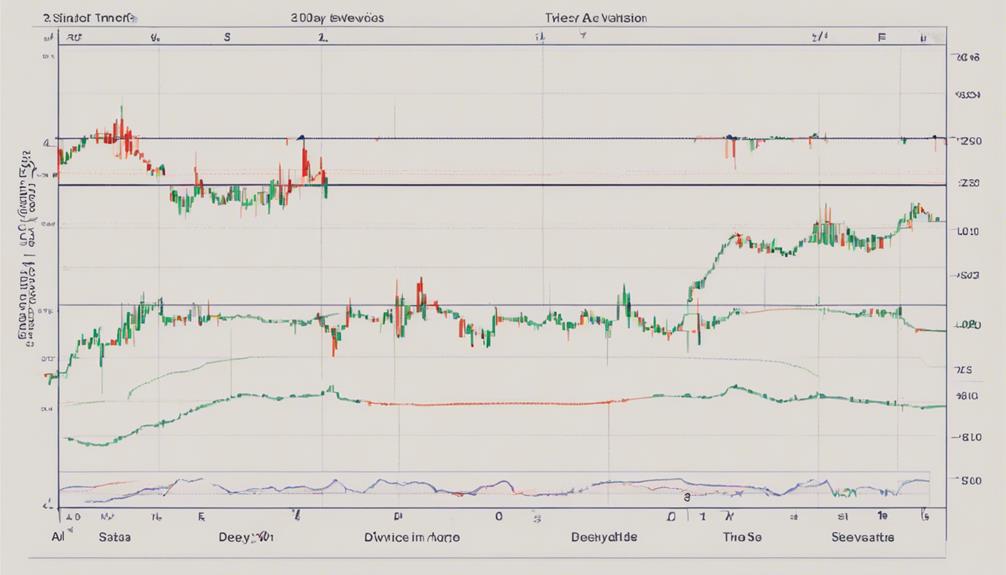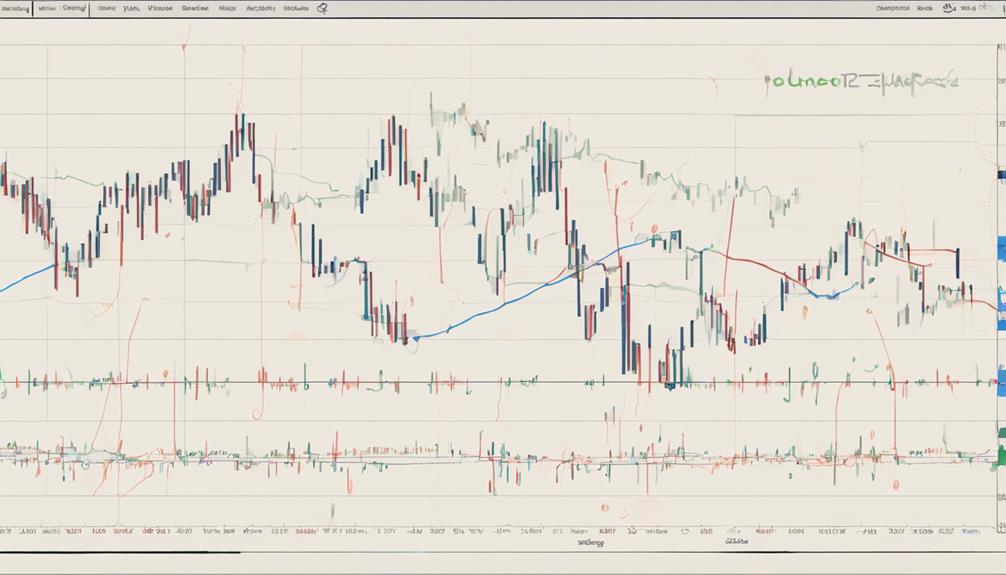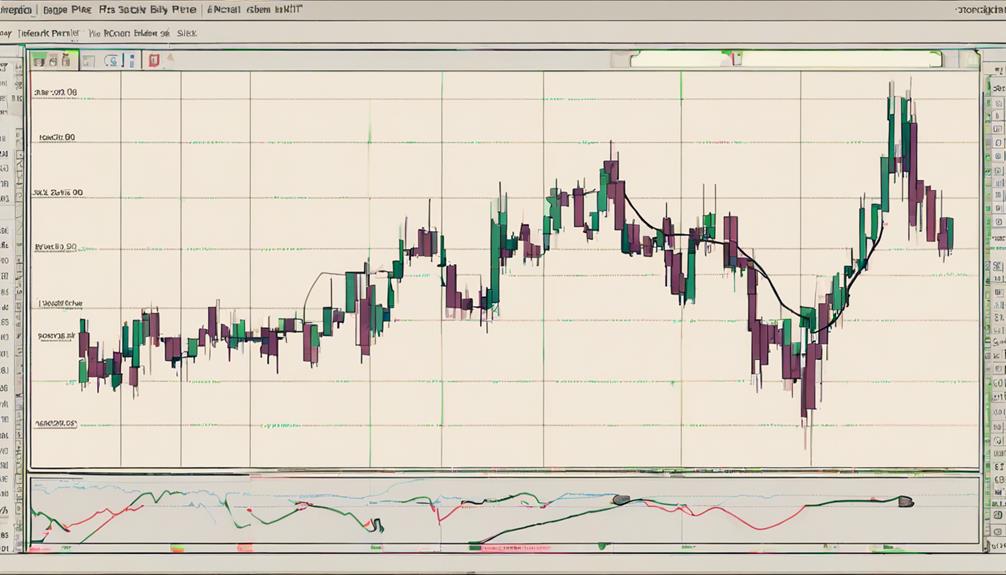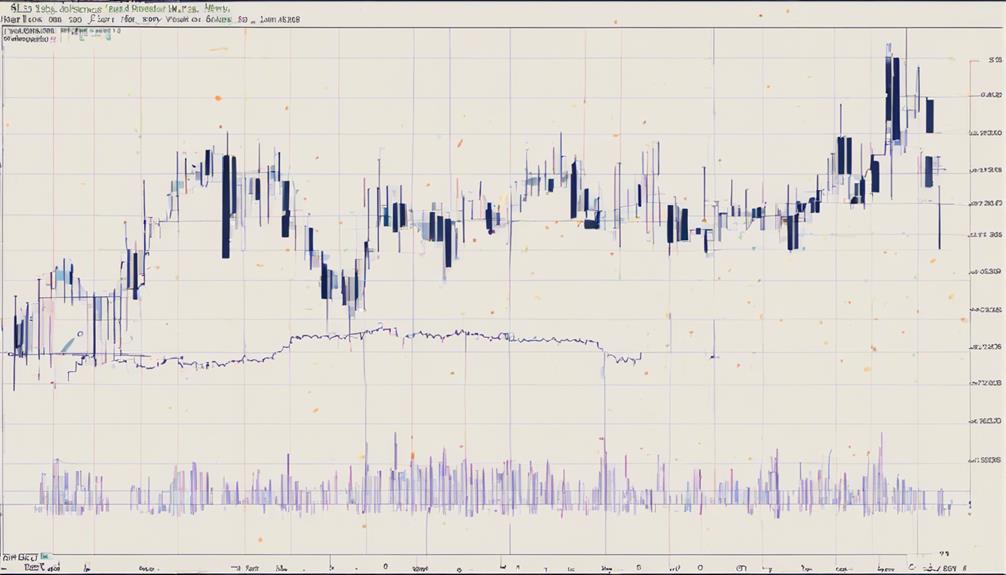Imagine Bollinger Bands as the guardrails on a winding road, guiding you through the twists and turns of market volatility. Understanding these bands can be a game-changer in your trading strategy.
As you start unraveling the layers of Bollinger Bands, you'll uncover a world of insights that could potentially reshape how you approach trading decisions. With each step in this guide, you'll gain a deeper understanding of how to leverage this powerful tool effectively in the dynamic landscape of financial markets.
Basics of Bollinger Bands
To grasp the essence of Bollinger Bands, understand that they consist of a middle band calculated using the Simple Moving Average (SMA) and upper/lower bands positioned based on standard deviations. The upper band is typically set at 2 standard deviations above the SMA, while the lower band is set at 2 standard deviations below.
These bands play a crucial role in technical analysis by indicating market conditions such as overbought and oversold scenarios when the price touches the bands. Moreover, the width of the bands offers insights into market volatility levels, aiding traders in evaluating price action.
Understanding these fundamentals is essential for formulating effective trading strategies tailored to prevailing market conditions.
Calculating Bollinger Bands

Understanding how to calculate Bollinger Bands involves utilizing a 20-day simple moving average (SMA) as the middle band. The upper band is determined by adding 2 times the 20-day moving standard deviation to the SMA, while the lower band is found by subtracting 2 times the standard deviation from the SMA.
Bollinger Bands dynamically adjust to market volatility, reflecting the standard deviation of price fluctuations. These bands are essential in identifying overbought and oversold conditions, as they illustrate the typical price range.
Importance in Trading Analysis

Bollinger Bands play a crucial role in analyzing market trends and identifying potential reversals and trend strength based on price action. Traders rely on them for various reasons in trading analysis:
- Bollinger Bands dynamically measure market volatility, aiding in understanding overbought and oversold conditions.
- They assist in risk management by confirming trading signals and setting appropriate stop-loss levels.
- Understanding the relationship between the bands can provide valuable insights into market reversals and potential trading opportunities.
Incorporating Bollinger Bands into your analysis can enhance your understanding of market dynamics and improve your decision-making process when trading.
Implementing Trading Strategies

Implementing trading strategies with Bollinger Bands involves utilizing various approaches such as trend continuation, reversal, and range trading to capitalize on market movements effectively. Traders can use Bollinger Bands to identify trends and establish specific entry and exit criteria based on price action.
For swing trading, opportunities arise during Bollinger Bands squeezes, and trades can be initiated at outer band hooks. Day traders may opt for double Bollinger Bands for intraday trading, focusing on trend reversals and executing trades within standard deviation zones.
The Bollinger Bands Bounce strategy is suitable for day trading, demanding discipline, precise settings, and attentiveness during trading sessions to profit from price fluctuations within the standard deviation bands.
How Can I Use Bollinger Bands in Conjunction with RSI for Trading Strategy?
When developing a trading strategy, consider incorporating the RSI Bollinger Bands strategy. This method combines the relative strength index (RSI) with Bollinger Bands to identify potential entry and exit points for trades. By utilizing both indicators, traders can gain a more comprehensive understanding of market trends and make informed decisions.
Can You Provide a Step-by-Step Guide for Understanding Bollinger Bands for Trend Analysis?
Bollinger Bands are a key tool for understanding Bollinger Bands trend analysis. First, familiarize yourself with the basics of moving averages and standard deviations. Then, learn how to interpret the upper and lower bands, as well as the middle band, to identify potential trends and market volatility.
Practical Application in Python

To apply Bollinger Bands practically in Python, you can utilize libraries such as Pandas and Matplotlib for seamless calculations and visual representation on price charts. When working with Bollinger Bands in Python, consider the following:
- Python enables easy calculation of moving averages and standard deviations for Bollinger Bands.
- Using Python, you can plot Bollinger Bands on price charts, allowing for visual analysis of historical price data.
- Python facilitates the backtesting of trading strategies by automating Bollinger Bands analysis and signal generation for trading algorithms.
Frequently Asked Questions
How Do You Read and Understand Bollinger Bands?
To read and understand Bollinger Bands, observe price movements relative to the bands. Touching the upper band indicates overbought conditions; the lower band, oversold. Squeezes imply low volatility. Analyze these signals alongside other indicators for informed trading decisions.
How Do You Use Bollinger Bands Effectively?
To use Bollinger Bands effectively, focus on finding price touches or breaks beyond the bands. This signals potential overbought or oversold conditions. Combining them with other indicators enhances trading signals, confirming trends or reversals for informed decisions.
What Are Bollinger Bands for Dummies?
Bollinger Bands for dummies are a technical tool consisting of a moving average and upper/lower bands at 2 standard deviations. They help gauge market volatility and potential shifts based on price movements within the bands.
How Do You Predict With Bollinger Bands?
You don't predict with Bollinger Bands; instead, they reveal potential market shifts based on volatility. Use them to gauge overbought or oversold conditions and watch for breakouts. Combine with other indicators for better trading decisions.
Conclusion
As you navigate the realm of trading with Bollinger Bands, remember that they're your trusty compass in the volatile market seas. Just like a seasoned sailor relies on the North Star to guide their journey, traders rely on Bollinger Bands to navigate through price fluctuations and potential reversals.
So, chart your course wisely, keep a keen eye on the bands, and let them steer you towards profitable trading waters. Fair winds and following seas await you!
